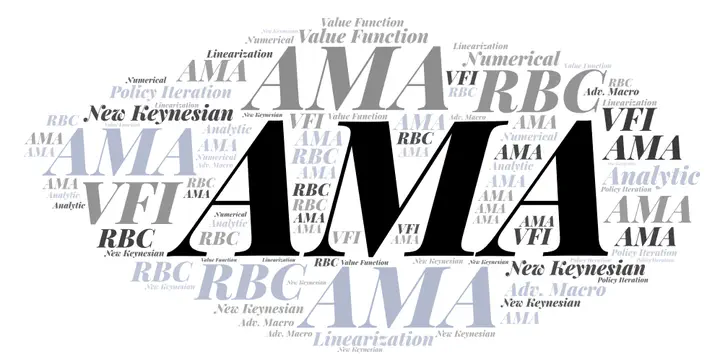AMA 2.1
 Created using https://wordart.com/
Created using https://wordart.com/This course will introduce students to the rigorous solution, estimation, and analysis of business cycle modelsNumerical solution methods will be compared in the analysis of the real business cycle (RBC) model and numerical estimation techniques introduced in the analysis of New Keynesian models. Thus, the course will have a twofold focus on models and techniques.
Textbook: Recursive Macroeconomic Theory 4th Edition, MIT Press, 2018 By Thomas J. Sargent and Lars Ljungqvist
Numerical Methods in Economics MIT Press, 1998 By Kenneth L. Judd
Monetary Policy, Inflation, and the Business Cycle Princeton University Press, 2015 By Jordi Galí
Course Outline
Part I: Business Cycles and RBC
- Stylized facts
- Benchmark RBC model
Part II: Solution Methods 3. Analytic Case: Value Function Iteration, Howard’s Improvement, (Log)linearization 4. Linearization / Solving linear rational expectations models 5. Numerical Case: VFI 6. Numerical Case: Projections and Parameterized Expectations 7. Numerical Case: Local Nonlinear Approximation Perturbation
Part III: New Keynesian and Estimation 8. Monopolistic Competition and Nominal Rigidities (Calvo and Rotemberg) 9. Basic New Keynesian Model
share: false